The heat pump. Ideal for commercial use.
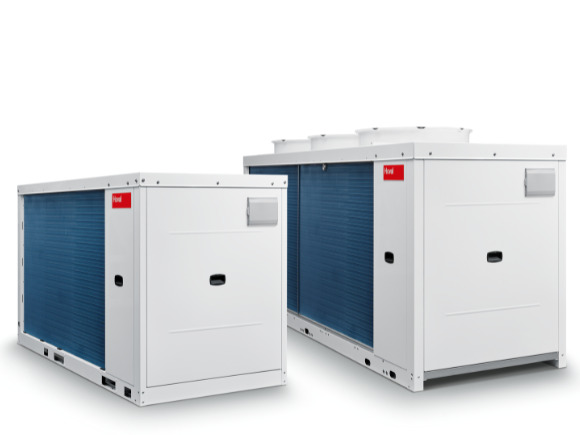
Heat pumps such as the Belaria fit from Hoval are not only ecological – they also feature a cooling function.
The heat pump for commercial use – efficient, sustainable and future-proof
Heat pumps are regarded as a particularly future-proof heating technology as they are ecological and do not need any fossil energy sources such as oil and gas. In larger buildings such as industrial plants, hotels and blocks of flats, there are however a number of important aspects which should be taken into account when choosing a heat pump.
When it comes to buildings with an increased heat demand, Hoval can also offer the perfect solution – for example, in the form of several heat pumps that are combined into a powerful system; this is also known as a cascade configuration. In terms of the cost-effectiveness of the heat pump solution, the prerequisites are the same as they are for a single-family home – the flow temperature should be as low as possible. This can be achieved by means of good thermal insulation in the building or by using panel heating systems. In existing buildings with a higher heat demand, a good alternative is to combine a heat pump with a gas heating system – these systems are also known as hybrid heating systems or bivalent systems.
Broad power spectrum
From hotels and office buildings to production halls – Hoval has the ideal heating solution for your individual needs. Hoval heat pumps are available in a broad power spectrum and with a flow temperature of up to 70°C. A central controller coordinates the components, including online via HovalConnect.
Can be combined with photovoltaics
The combination of heat pump and PV system is particularly effective and ecological. The system can automatically adapt the management of heat production to the predicted electricity surplus of the photovoltaic system – ensuring your heat pump runs economically.
Energy-efficient building cooling
Keeping the indoor climate pleasant in summer, without the need for an air-conditioning system – and if you use green electricity, cooling is even carbon neutral. Depending on the Hoval heat pump model, you will enjoy maximum comfort with either active or passive building cooling.
It was important for us to establish optimum working conditions. This included having the ideal temperatures, that could be generated energy efficiently.
Verena Hanisch-Horvath
MediaShop Project Manager and satisfied Hoval customer
How does a heat pump work?
As a heat pump does not involve a combustion process and therefore does not have any direct CO2 emissions, it is becoming more and more important as a heat generator. The functional principle of a heat pump is essentially the same as that of a refrigerator – just the other way round. While a refrigerator extracts heat from its interior and directs it outside, a heat pump extracts heat from the ambient air, earth or ground water and supplies it to the building as heating energy. For this process, 20–25% electrical power is used as drive energy and 75–80% freely available ambient energy is required.
However, heat pumps can be used for more than just room and water heating – they can also be used as an energy-efficient option for cooling buildings on scorching summer days.
To activate the cooling function, the refrigerant circuit for heat generation is reversed so that surplus heat is extracted from the room.
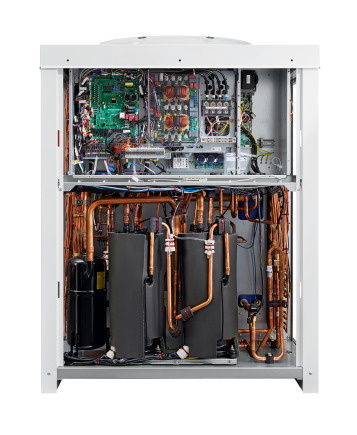
Types of heat pump: air, water & earth
Depending on the energy source being used, there are basically three different types of heat pump: air, earth and water heat pumps. The full name of the various types of heat pump is always made up of two parts – the first part denotes the heat source from which the heat pump extracts energy and the second part describes how the heat is distributed. For example: an air/water heat pump extracts heat from the air (heat source) and delivers the energy to the heating system via water (heat distribution).
Which of the three heat pump types is most suitable for your building project depends on several factors:
• Structural and geological conditions
• Demand for room heating and hot water
• Level of investment
• Use as main heat generator or bivalent system
• Installation site
• Personal preferences
A brief overview of the three most common types of heat pump is provided below.
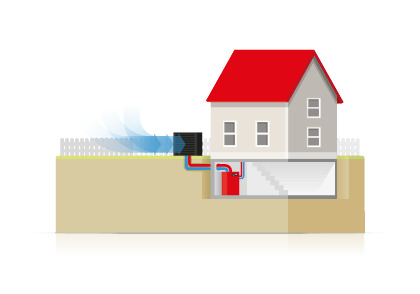
Air/water heat pumps
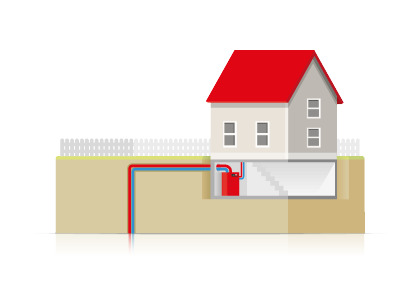
Brine/water heat pumps
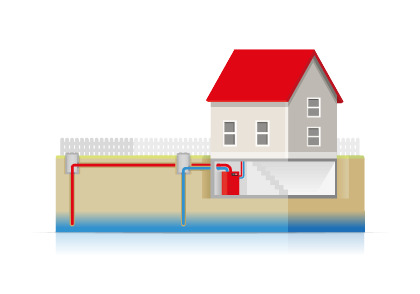
Water/water heat pumps
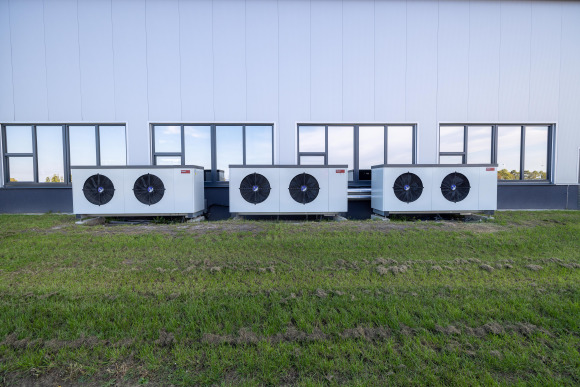
Combining several heat pumps is an especially good option if a building has high heating or cooling requirements.
A superb line-up: the heat pump cascade
Energy needs in industrial and commercial buildings often vary considerably from those of a single-family home. To meet these elevated or highly fluctuating output requirements efficiently and reliably, a heat pump cascade provides an excellent solution.
In this special form, heat pumps are connected to each other in series so that the power spectrum adjusts to the particular heating and cooling requirements as well as any fluctuations. As a result, the cost-effectiveness of the heat pump cascade is increased and more renewable energies are used.
The heat output of the heat pump system can be controlled by activating or deactivating individual heat pumps, enabling efficiency to be increased.
Further advantages of a cascade configuration include the use of individual heat pumps for heating and cooling as well as runtime balancing, which ensures that all units are used to the same level and no single heat pump is overloaded. The cascade’s redundancy function also ensures increased operational safety and applications for state funding can be made for each individual heat pump incorporated into the series configuration.

Belaria fit. Air/water heat pump
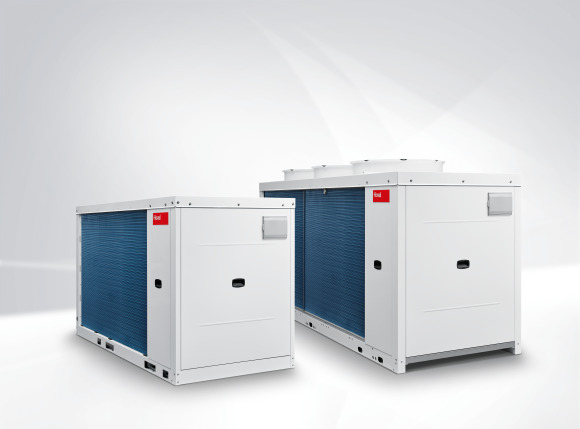
Belaria fit (53): up to 853 kW
Belaria fit (85): up to 1.4 MW
Modulating air/water heat pump for heating and cooling in two output sizes for outdoor installation.
It is especially suitable for medium-sized residential, commercial, industrial or administrative buildings in new construction or renovation.
With Belaria fit, efficient systems with a high proportion of renewable energies can be planned. As a monovalent system, up to 1.4 MW is possible. Bivalent hybrid systems can even supply up to 4 MW - depending on the required proportion of renewable energies.
